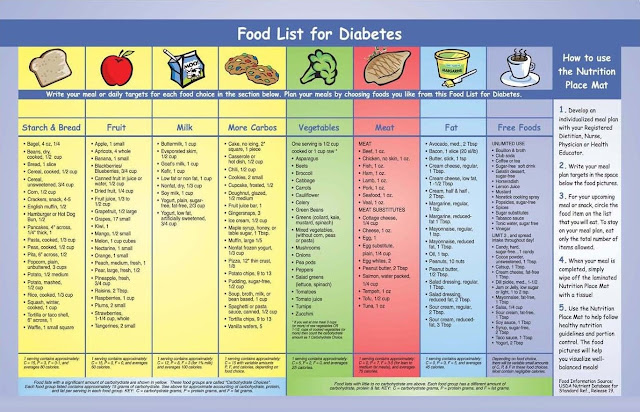Eat the right amount of calories for how active you are, so that you balance the energy you consume with the energy you use. If you eat or drink too much, you'll put on weight. If you eat and drink too little, you'll lose weight.
Eat a wide range of foods to ensure that you're getting a balanced diet and that your body is receiving all the nutrients it needs.
It is recommended that men have around 2,500 calories a day (10,500 kilojoules). Women should have around 2,000 calories a day (8,400 kilojoules). Most adults are eating more calories than they need, and should eat fewer calories.
Plan for healthy eating
Using a standard dinner plate, follow the Plate Method in the image below to control your portion sizes.
- Have a glass of milk and a piece of fruit to complete your meal.
- Alcohol can affect blood glucose (sugar) levels and cause you to gain weight. Talk to your health-care professional about whether you can include alcohol in your meal plan and how much is safe.
- Eat more vegetables. These are very high in nutrients and low in calories.
- Choose starchy foods such as whole grain breads and cereals, rice, noodles, or potatoes at every meal. Starchy foods are broken down into glucose, which your body needs for energy.
- Include fish, lean meats, low-fat cheeses, eggs, or vegetarian protein choices as part of your meal.
- Your hands can be very useful in estimating appropriate portions. When planning a meal, use the handy Portion Guide.
- The Canadian Diabetes Association recommends that all people with diabetes should receive advice on nutrition from a registered dietitian.
- Good management of diabetes includes healthy eating, staying active and taking required medication.
- Be sure to eat breakfast. It provides a good start to the day.
- It’s natural to have questions about what food to eat. A registered dietitian can help you include your favourite foods in a personalized meal plan.
 |
| Diet Chart for Diabetes - Sugar |
Eat more fish – including a portion of oily fish
Fish is a good source of protein and contains many vitamins and minerals. Aim to eat at least two portions of fish a week, including at least one portion of oily fish. Oily fish contains omega-3 fats, which may help to prevent heart disease.
Oily fish include:
- salmon
- mackerel
- trout
- herring
- fresh tuna
- sardines
- pilchards.
Non-oily fish include:
- haddock
- plaice
- coley
- cod
- canned tuna
- skate
- hake
If you regularly eat a lot of fish, try to choose as wide a variety as possible.
Cut down these Saturated foods :
Saturated fat is found in many foods, such as:
- hard cheese
- cakes
- biscuits
- sausages
- cream
- butter
- lard
- pies.
Sugar in our diet
Regularly consuming foods and drinks high in sugar increases your risk of obesity and tooth decay.
Sugary foods and drinks, including alcoholic drinks, are often high in energy (measured in kilojoules or calories), and if eaten too often, can contribute to weight gain. They can also cause tooth decay, especially if eaten between meals.
Many packaged foods and drinks contain surprisingly high amounts of free sugars. Free sugars are any sugars added to foods or drinks, or found naturally in honey, syrups and unsweetened fruit juices.
Cut down on:
- sugary fizzy drinks
- alcoholic drinks
- sugary breakfast cereals
- cakes
- biscuits
- pastries








Post a Comment